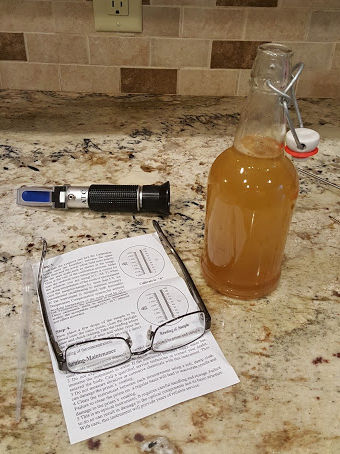Before we get into the real “meat” of this post, let me remind you that I am an expert at nothing, except maybe driving my husband nuts. I’ve also learned that there are quite a few bloggers out there who are in that same boat with me . . but they may not be driving their husbands nuts. When I read things that don’t sound quite right, I do my own investigating if it’s something that really matters to me.
I was chatting with a reader today and we were talking about the caffeine in kombucha. Many sites will say that the caffeine somehow disappears during the fermenting process. I do not believe that to be true but it doesn’t matter to me so I don’t concern myself with it but here is an article that talks about some of the myths associated with kombucha and they mention caffeine.
Whether the folks writing that article know what they’re talking about or not . . I have no idea but that article agrees with me so I think they’re right! 🙂
Another thing that is discussed a lot when talking about kombucha is sugar and that is something that does matter to me. If you are interested, please read that article above because it talks about sugar too.
I’ve read over and over that the sugar is “eaten” during the fermentation process but my limited chemistry knowledge had me questioning that.
Because the sugar mattered, I ordered a refractometer and last night we calibrated it and checked three bottles of kombucha. The first had on the lower edge of 6% sugar but that bottle was actually so sour that we poured it out. The next two were not so sour and had 8 to 9% sugar. I was highly disappointed. Dr. Pepper has 12% sugar . . which isn’t a heck of a lot different from my kombucha except there’s no sodium and way, way less caffeine in my kombucha and it costs a fraction of what soda costs.
I usually add 1 tsp. sugar to the second ferment. I’m going to try it with 1/2 tsp. and see if I still get the fizz I want and re-check the sugar on those bottles and I’ll report back.

